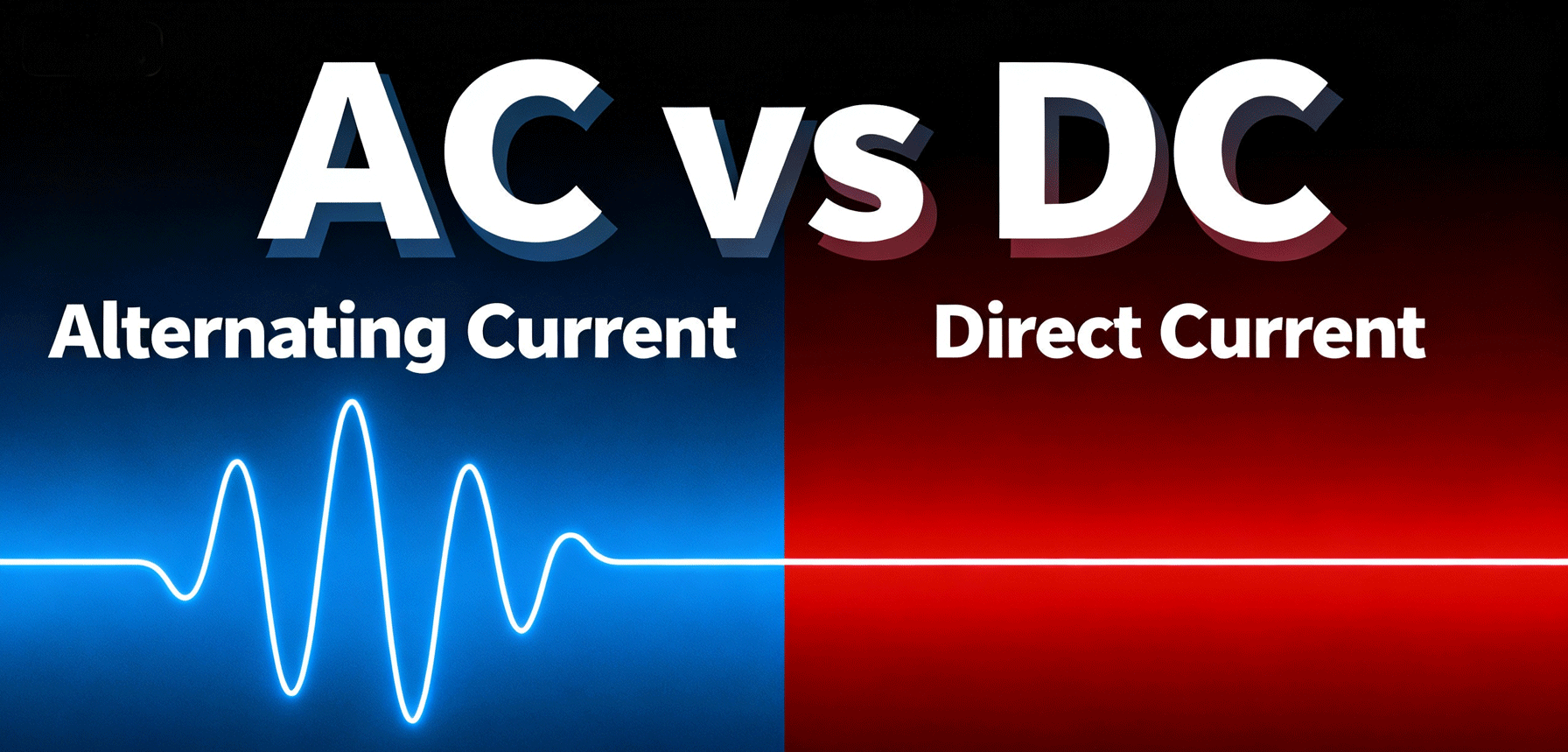English 


Views: 0 Author: Site Editor Publish Time: 2025-10-14 Origin: Site

As a core component in the electrical grid, power transformers are at the heart of how we distribute and use electricity. But the electricity that flows through these transformers comes in two primary forms: Alternating Current (AC) and Direct Current (DC). Understanding the difference is fundamental to understanding modern power systems.
At [Your Company Name], a specialist in power transformer manufacturing, we deal with AC power every day. In this article, we'll clearly explain the difference between AC and DC, why AC became the standard for power grids, and where DC is indispensable.
Imagine the flow of electricity like water flowing in a pipe.
Direct Current (DC) is like water flowing steadily and constantly in one direction down a straight pipe. It's predictable and uniform.
Alternating Current (AC) is like water rushing back and forth rhythmically in a pipe. The net movement is zero, but energy is still being transferred through the motion.
This fundamental difference in the direction of flow is the essence of AC and DC.
Feature | Alternating Current (AC) | Direct Current (DC) |
Definition | Current that reverses direction periodically. | Current that flows constantly in one direction. |
Waveform | Sine wave (typically). | A straight, flat line. |
Flow of Electrons | Electrons oscillate back and forth. | Electrons flow steadily from negative to positive. |
Voltage | Easily transformed from high to low voltage and vice-versa. | Voltage is constant and difficult to change efficiently. |
Power Factor | Lies between 0 and 1. | Is always 1. |
Generation | Generated by alternators in power plants. | Generated by solar panels, batteries, and rectifiers. |
Transmission | Highly efficient over long distances with low loss. | Inefficient over long distances, with significant power loss. |
Applications | Power grids, homes, factories, and most appliances. | Batteries, electronic devices, solar cells, EVs. |
DC: The key here is Direct. The electric charge flows in a single, unwavering direction from the positive to the negative terminal. Think of a battery-powered flashlight; the energy flows straight from the battery to the bulb.
AC: The key here is Alternating. The electric charge periodically reverses direction. In most power systems, this happens 50 or 60 times per second (measured as Hertz, Hz). This means the electrons in your home wiring are vibrating back and forth 60 times a second, not traveling in a continuous loop.
This isn't just history; it's the fundamental reason our power grid is built on AC, and consequently, why power transformers are so critical.
In the late 19th century, Thomas Edison championed DC, while Nikola Tesla and George Westinghouse advocated for AC. AC won the "War of the Currents" for one primary reason: transformability.
The Problem with Transmitting DC: When electricity travels over long distances, it faces resistance in the wires, causing power loss as heat. To reduce this loss, you need to transmit power at a very high voltage and then "step down" to a safe, low voltage for homes and businesses.
DC's Fatal Flaw: In the 1880s, there was no efficient and economical way to increase or decrease DC voltage.
AC's Winning Advantage: AC voltage can be easily increased (stepped-up) and decreased (stepped-down) using a device called a transformer.
This is where our expertise comes in. Power transformers at generating stations step up AC voltage to incredibly high levels (like 400,000 volts or more) for efficient long-distance transmission with minimal loss. Then, at substations near populated areas, other transformers step the voltage down to the 120/240V we use in our homes.
This simple ability to transform voltage is why AC became the undisputed standard for the world's power grids.
While AC rules the grid, DC is far from obsolete. Each type excels in its own domain:
AC is Best For:
Powering entire cities and homes.
Industrial motors and machinery which are simpler and more reliable on AC.
High-power applications like heating and lighting.
DC is Essential For:
Electronics: Your phone, laptop, TV, and all digital devices run internally on DC. This is why their power adapters (or "chargers") are actually AC-to-DC converters.
Batteries: All batteries (including those in EVs) store and provide DC power.
Solar Power: Solar panels generate DC electricity, which requires an inverter to convert it to AC for home use.
Electric Vehicles: EV batteries use DC, and DC fast-charging stations are becoming the standard.
The difference between AC and DC isn't about which is better; it's about which is right for the job. Our modern world relies on a sophisticated partnership between the two.
AC is the champion of long-distance power transmission and distribution, enabled by the humble yet vital power transformer.
DC is the champion of energy storage and the digital electronics that power our daily lives.
At Pearl Electric, we are experts in the AC side of this partnership. We design and manufacture reliable power transformers that form the backbone of electrical infrastructure, ensuring that the AC power generated at the plant is delivered efficiently and safely to your doorstep.
Need a reliable power transformer for your utility, industrial plant, or renewable energy project? [Contact our team of experts] to find the perfect solution for your AC power needs.